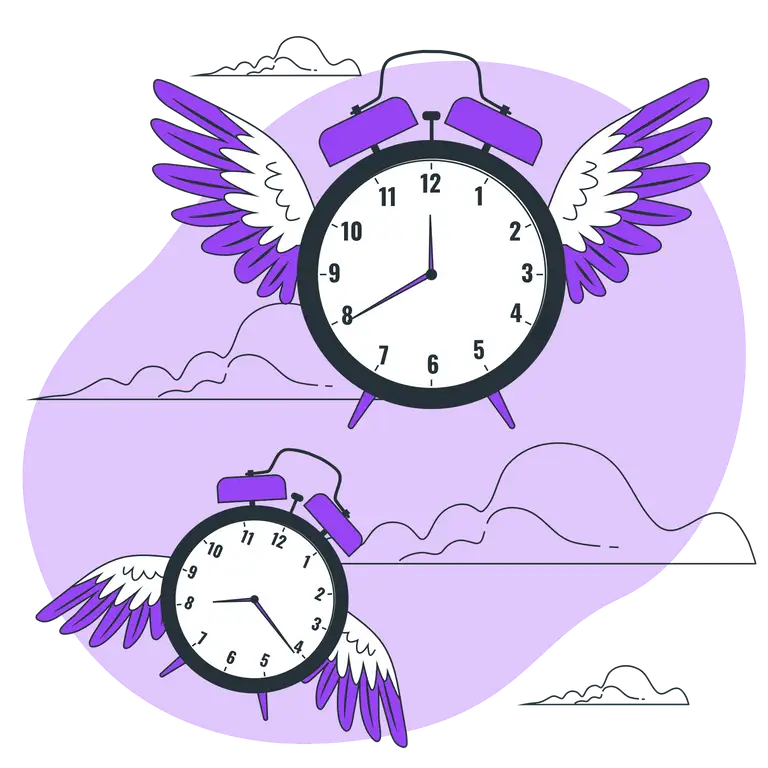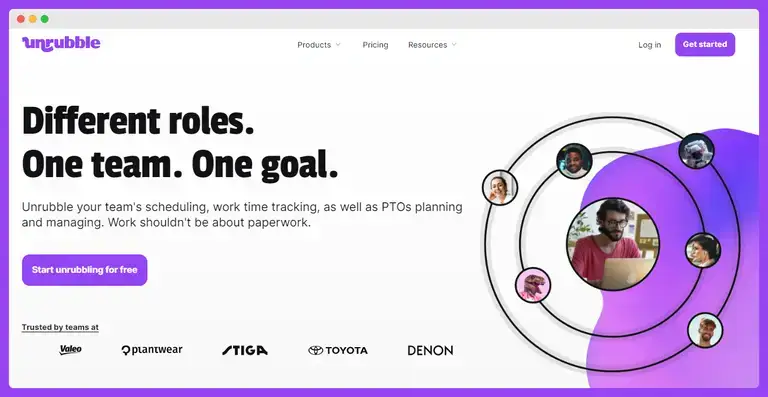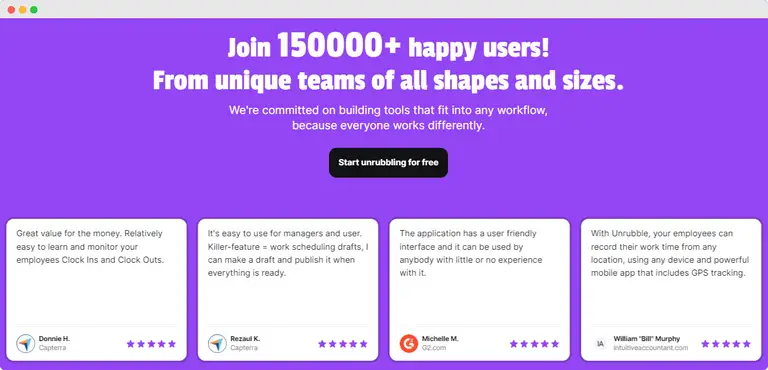Are you craving a productivity boost? Have you ever heard of the 52-17 rule?
This game-changing time management strategy might be the missing puzzle to unlocking better focus and efficiency in your work routine.
In this article, we'll explore the basics of this rule.
Is it for you? What does it look like in practice? What are the alternatives you could explore?
Find out this, and more, right now:
What is the 52-17 rule and how does it work?

The 52-17 rule is a productivity and time management method. It suggests that working in focused, uninterrupted blocks of time for 52 minutes, followed by a 17-minute break, can enhance productivity and well-being. This rule is based on the idea that the human brain operates optimally when alternating between periods of intense concentration and short breaks.
52 minutes of work and 17 minutes of rest in practice
Here's how the 52-17 rule works in practice:
Work intensely for 52 minutes
- Choose a specific task or project.
- Set a timer for 52 minutes (or one full Pomodoro cycle).
- Work with focused and uninterrupted concentration during this time.
- Avoid distractions and stay committed to the task at hand.
Take a 17-minute break
- Once the timer rings after 52 minutes, take a break for exactly 17 minutes.
- Use this time to relax, recharge, and step away from work-related activities.
- Consider activities such as stretching, walking, deep breathing, or anything that helps you unwind.
Repeat the cycle
- After the 17-minute break, return to work and start another 52-minute focused work session.
- Repeat this cycle throughout your workday.
The idea behind the 52-17 rule is to leverage the brain's natural rhythm of attention and renewal. The 52-minute work period is based on the concept of a Pomodoro, a popular time management technique.
The 17-minute break allows for mental recovery and prevents burnout.
This rule is a form of time blocking. It encourages sustained focus during work intervals and acknowledges the importance of regular breaks. People who use it get to maintain their overall productivity and well-being. In this method, remember it's vital to adjust the intervals based on personal preferences and the nature of the work.
Examples of the 52 and 17 rule in the workplace: work from home & others
Traditional Office Setting
Work on a project or task for 52 minutes, then take a 17-minute break. During the break, step away from your desk, stretch, or take a short walk around the office. Use this time to refresh your mind.
Remote work scenario
Set a timer for 52 minutes while working from home. After the timer goes off, take a 17-minute break to do a quick home chore, like folding laundry or watering plants. This helps you stay productive and maintain a tidy living space.
Meeting schedule
Schedule meetings to last for 52 minutes, leaving the last 8 minutes for a quick recap and the next steps. Afterward, take a 17-minute break before jumping into the next meeting. This approach makes your meetings focused, and participants have time to recharge.
Customer service desk
If you're in a customer service role, dedicate 52 minutes to attending customer inquiries and resolving issues. Afterward, take a 17-minute break to relax and clear your mind. This can boost your skills to provide quality service consistently.
Creative work blocks
For creative tasks like writing or design, work intensely for 52 minutes, then take a 17-minute break to engage in a creative or relaxing activity. This could include sketching, reading a short article, or listening to music to stimulate fresh ideas.
Remember, the 52-17 rule is a guideline, and its effectiveness may vary for different individuals and tasks.
Can anybody work for 52 minutes and have a break for 17 minutes?
The 52-17 schedule might not be suitable for everyone.
Here's why:
Lack of flexibility
- Not all jobs or industries allow for flexible breaks every hour.
- Some professions, especially those with stringent deadlines or client demands, may require continuous focus for extended periods.
Nature of the work
- Certain tasks, such as creative endeavors or complex problem-solving, might benefit from longer, uninterrupted blocks of time.
- Constantly interrupting such work can hinder the depth of concentration needed for certain activities.
Inflexible work environments
- Some workplaces may have policies or cultures that don't align with frequent breaks. This makes it challenging for employees to implement the 52-17 rule.
What to use instead to stay productive?
Instead of strictly adhering to the 52-17 schedule, you might consider these alternatives to increase your productivity:
Adapt the Pomodoro Technique
Modify the Pomodoro Technique to suit your work style. For instance, you might prefer longer work intervals followed by slightly longer breaks.
Implement sprints
Break your work into focused sprints, where you work intensely for a predetermined time, followed by a short break. Adjust the duration based on the nature of your work and personal preferences.
Flexible breaks
If the 52-17 schedule is not feasible, consider taking breaks at times that align with the natural ebb and flow of your energy levels.
Optimize your breaks for activities that recharge you. It could be a short walk, stretching, or a brief mindfulness exercise.
Productivity experimentation
Experiment with different work-break ratios to find what suits you best. Some people might thrive with shorter, more frequent breaks, while others may prefer longer, less frequent ones.
While the rule of 52 and 17 works well for many, it's crucial to recognize that productivity strategies are not one-size-fits-all. You should assess your unique work environments, job requirements, and personal preferences to determine the most effective approach to managing time and enhancing efficiency.
How to make 52-17 work

Possibly the most effective way to make the 52-17 schedule work is by implementing time tracking tools.
Tools like Unrubble help you understand your work patterns and identify peak productivity hours.
You can easily customize your schedule based on your natural rhythm and periods of high energy and focus.
Here's how we do it at Unrubble:
Unrubble is an excellent tool for implementing the 52-17 time management rule and enhancing overall productivity in the workplace.
Its user-friendly interface and seamless setup make it a perfect companion for those new to time management techniques.
With Unrubble's time tracking feature, you can effortlessly adhere to the rule of working for 52 minutes and then taking a 17-minute break.
The precision in tracking work hours ensures that you can precisely follow the time intervals suggested by the rule.
Moreover, Unrubble's integration with real-time notifications keeps you updated on your schedule, making it easy to stick to the 52-17 rule without missing a beat.
Unrubble simplifies the process, allowing you to focus on what matters most – improving your work habits.
So, if you're looking for an intuitive tool to kickstart your journey with the 52-17 rule (or any other), Unrubble is your go-to solution.
Start unrubbling for free and experience the difference in your work routine.
Other tools you might consider: DeskTime, TimeDoctor, Clockify, TimeCamp.

Boost your productivity in no time
Embracing the 52-17 rule can revolutionize how you approach work. But it's essential to acknowledge that it may not fit everyone's circumstances.
If your work environment or nature of tasks doesn't align with this schedule, fear not – alternatives abound.
Remember, productivity is personal. To make this schedule work seamlessly, consider employing time-tracking tools like Unrubble.
With its user-friendly interface and real-time notifications, we guarantee you can effortlessly adhere to the rule.
Get things done easily with Unrubble. It's time to increase productivity and simply work better.
FAQ
Is the 52-17 rule real?
Yes, the 52-17 rule is real and has been shown to increase productivity by aligning work intervals with the natural rhythms of the human brain, promoting sustained cognitive function and energy levels.
What is the 52-17 technique?
The 52-17 technique involves working for 52 minutes of focused work followed by a 17-minute break. This method boosts productivity levels and overall well-being by allowing time to recharge.
When to use 52 17?
Use the 52-17 rule when you need to maximize productivity without burning out. It’s especially effective for tasks requiring high concentration over more hours, helping to eliminate distractions and maintain high energy levels.
What is 52 minutes of work followed by a 17-minute break?
This is a productivity method where the most productive employees work for 52 minutes and then take a 17-minute break, which has been found to optimize alertness and well-being throughout the day.
What is the ideal pomodoro ratio?
While traditional Pomodoro techniques suggest 25 minutes of work to a 5-minute break, some find adjusting this ratio to longer periods such as 52 minutes of work followed by a 17-minute break enhances productivity and well-being.








